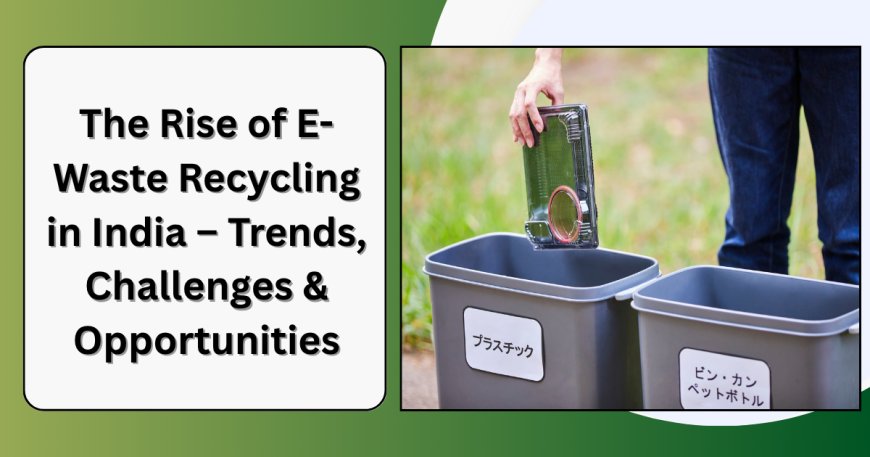The Rise of E-Waste Recycling in India – Trends, Challenges & Opportunities
As India continues its rapid digital and technological growth, a parallel issue has emerged — the surge in electronic waste, commonly known as e-waste. From discarded smartphones and laptops to obsolete televisions and batteries, India is now the third-largest generator of e-waste globally. This blog explores the rise of e-waste recycling in India, the current trends, challenges, and the path forward to build a sustainable ecosystem.

What is E-Waste?
E-waste, or electronic waste, is referred to as "e-waste," or electronic garbage that is no longer functional or useful. This includes:
-
Computers, laptops, and servers
-
Mobile phones and accessories
-
Televisions, refrigerators, and washing machines
-
Batteries, chargers, and circuit boards
The hazardous components (such as lead, mercury, and cadmium) in e-waste necessitate controlled, ecologically friendly management.
Why E-Waste Management Matters in India
E-waste management is crucial for several reasons:
-
Prevents environmental pollution and groundwater contamination
-
Reduces health hazards from informal recycling practices
-
Recovers valuable materials like gold, copper, and rare metals
-
Supports Indias sustainability goals and circular economy initiatives
Despite regulations under the E-Waste Management Rules, 2022, a large portion of e-waste in India is still handled by the informal sector in unsafe conditions.
Trends in E-Waste Recycling in India
-
Government Push for Compliance
-
Mandatory Extended Producer Responsibility (EPR) for brands
-
Increased awareness through Swachh Bharat and digital drives
-
-
Corporate Participation
-
Major brands are setting uptake-back programs and e-waste bins
-
Authorized recyclers expanding across states
-
-
Stock Market Spotlight
-
Rise of listed companies like Namo E-Waste, drawing investor interest
-
Investors tracking Namo E Waste share price as the sector grows
-
-
Technology & Automation
-
Growth of automated recycling plants and data-wiping technologies
-
AI & robotics are being explored for material separation and safety
-
The Main Obstacles to Recycling E-Waste
-
Low public awareness about safe disposal
-
Lack of collection infrastructure in rural/semi-urban areas
-
Dominance of informal recyclers using hazardous practices
-
Inefficient enforcement of EPR rules
-
Poor segregation at source, making recovery harder
How to Reduce E-Waste at Individual and Organizational Levels
Whether you're a consumer or a company, heres how you can reduce e-waste effectively:
-
Donate or refurbish old electronics
-
Avoid unnecessary upgrades repair when possible
-
Use eco-friendly brands that offer take-back programs
-
Dispose responsibly at authorized e-waste drop-off points
-
For companies: partner with certified recyclers and maintain EPR compliance
Final Thought
Although India is making progress in sustainably recycling e-waste, much work remains. With public involvement, corporate accountability, and government regulation, the nation can create a strong e-waste management system that benefits the economy and the environment.
The environment is changing quickly, from raising awareness about e-waste disposal to making investments in the future through companies like Namo E Waste. Everyone must act now to decrease e-waste before it's too late, including consumers, companies, and legislators.






































